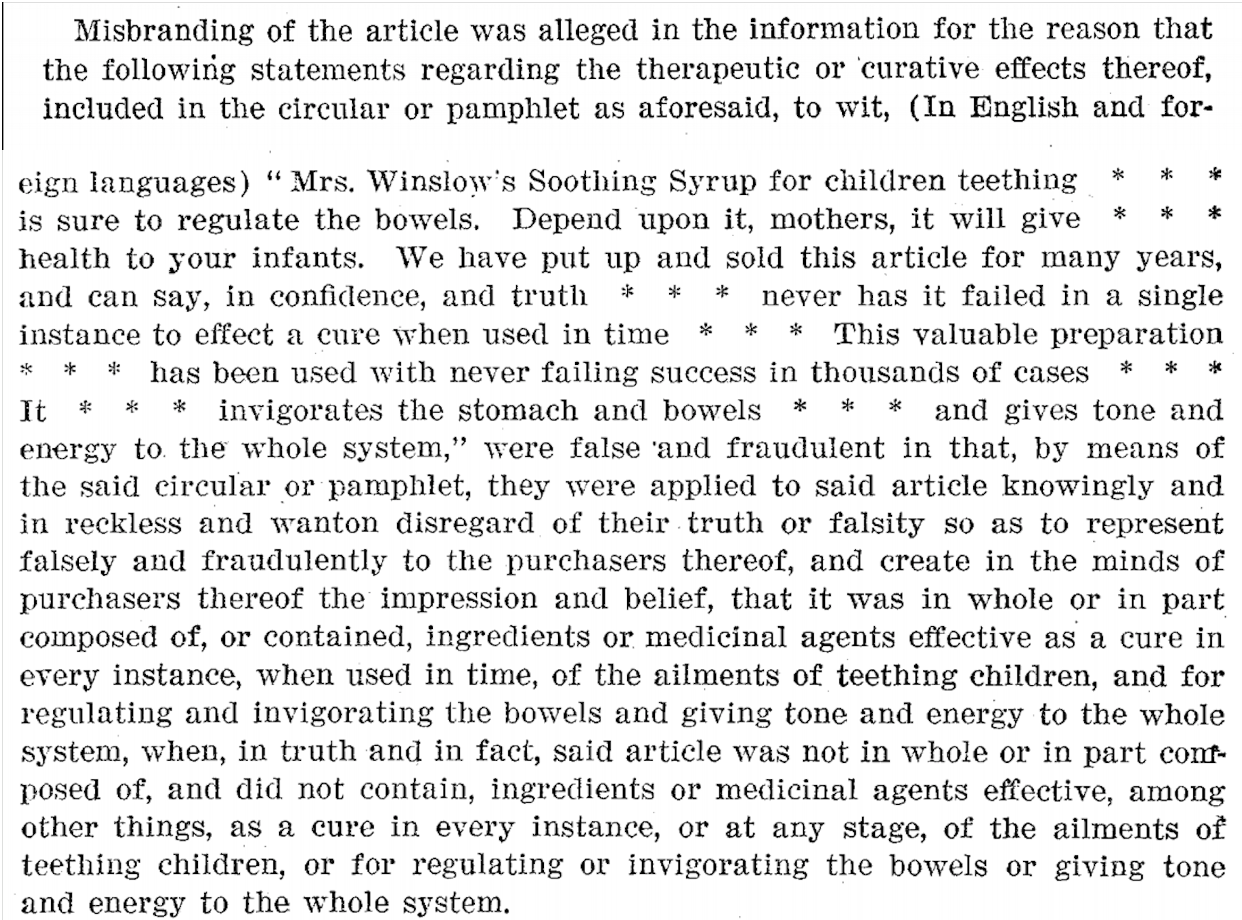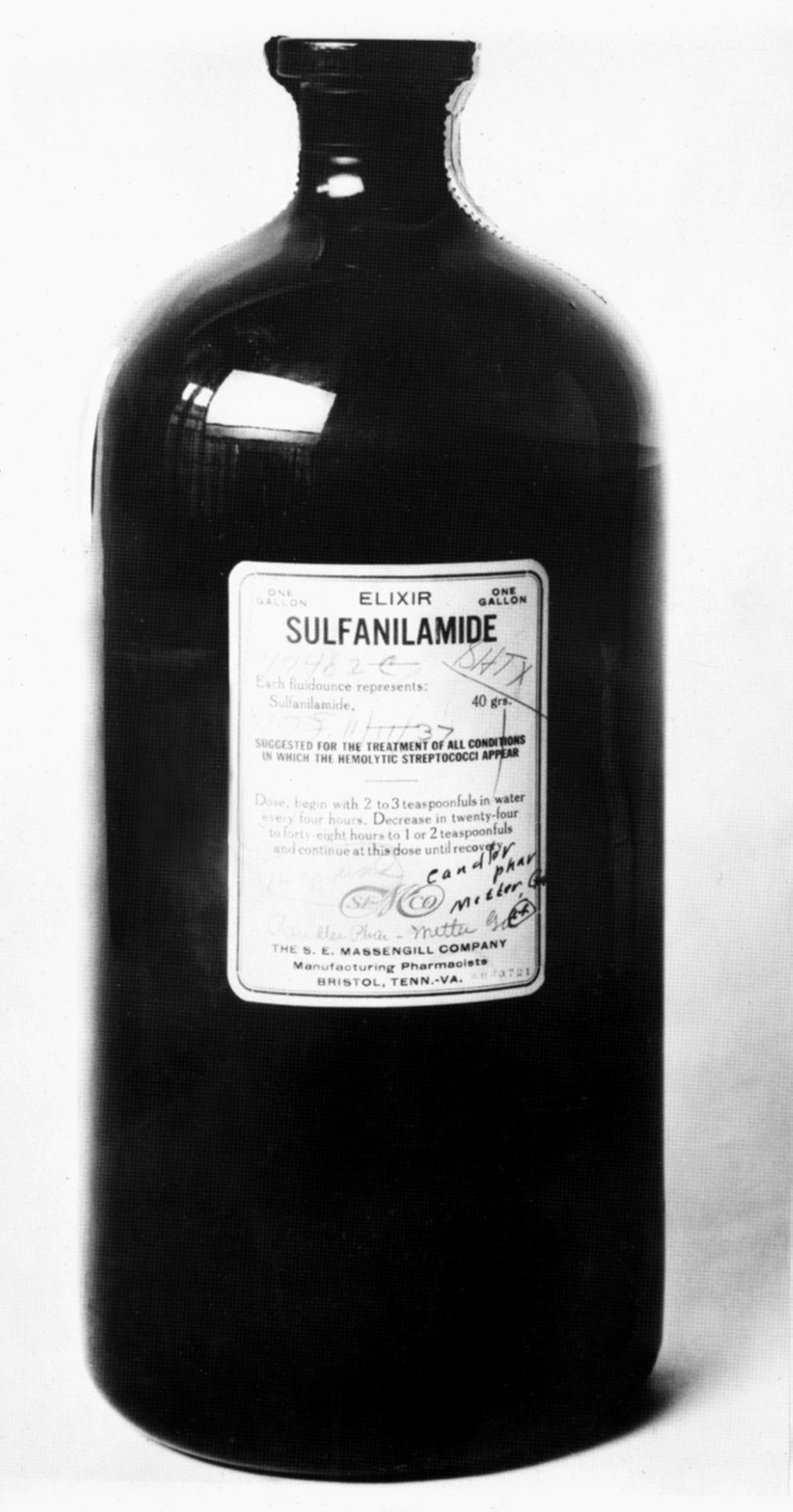The United States Food and Drug Administration (FDA) was first created to enforce the Pure Food and Drug Act of 1906. In this capacity, the FDA is charged with protecting the health of the US public, to ensure the quality of its food, medicine, and cosmetics. Before this time, the United States government had no formal oversight of these products and left issues of quality and purity to the individual manufactures, or at times, individual states.
This lack of regulation was not much of a concern during the early years of the country, as most people made their own goods, or purchased them from locally owned shops (who would make their own products). However, as more people moved into cities to work in factories and other urban jobs, pre-made goods were needed as city dwellers could not produce these themselves.

First Edition of The Jungle by Upton Sinclair. Source: The Internet Archive, https://archive.org/details/jungle00sinc
As these types of products gained in popularity, horrific stories regarding both workplace and product safety came to light. One of the most famous reports was Upton Sinclair’s The Jungle (1906) which detailed the abysmal working conditions in a Chicago meatpacking plant where rotten meat and poisoned rats were knowingly ground-up, canned, and sold to consumers.
Reports such as these convinced the US government to pass the Pure Food and Drug Act in 1906. Over the years, the act has been expanded and modified, and today the FDA is the major government agency involved in the oversight of prescription medications, including how these are advertised to the public. A closer look at important dates in the history of the FDA provides a direct link between the claims made on medical trade cards of the past, and those featured within modern direct-to-consumer drug advertisements.
Look at the timeline below to learn more about the people, legislative acts, and legal cases that contributed to the evolution of the FDA, the pharmaceutical industry, and direct-to-consumer-advertising.
Timeline: Through the Years with the FDA
1883

Dr. Harvey W. Wiley, U.S. Chief Chemist (1900). Source: FDA, https://commons.wikimedia.org/wiki/File:Portrait_of_Dr._Harvey_W._Wiley_(cropped).jpg
Dr. Harvey W. Wiley became the U.S. Chief Chemist and expanded the U.S. Bureau of Chemistry's food adulteration studies. He was a staunch advocate for enacting federal regulations to ensure the quality and safety of food and medicine throughout the country. Dr. Wiley is referred to as the "Crusading Chemist" and "Father of the Pure Food and Drugs Act" due to these convictions. He retired from government service in 1912 and died in 1930.
1906
The original Food and Drugs Act of 1906 was passed by Congress on June 30th and signed by President Theodore Roosevelt, created to prevent the “manufacture, sale, or transportation of adulterated or misbranded or poisonous or deleterious food, drugs, medications, and liquors...”
Prior to this Act, medications such as Mrs. Winslow's Soothing Syrup for teething and colicky babies did not need to disclose that its product contained ingredients such as morphine and alcohol.

Mrs. Winslow's Soothing Syrup Medical Trade Card. Source: Medical Center Archives of NewYork-Presbyterian/Weill Cornell Medicine, https://www.jstor.org/stable/community.28305419

Take a Look!
1911
A loophole in the Pure Food and Drug Act is discovered when the Supreme Court ruled in U.S. v. Johnson that the 1906 Food and Drugs Act does not prohibit false therapeutic claims but only false and misleading statements about the ingredients or identity of a drug.
1912
Congress enacts the Sherley Amendment to overcome the ruling in U.S. v. Johnson. The Sherley Amendment provided language that prohibited the intentional labeling of medication bottles or packaging with false therapeutic claims. For instance, due to this amendment the FDA was able to prosecute the manufacturers of Mrs. Winslow’s Soothing Syrup, due to continued false advertising regarding the curative effect of their product

Summary of the misbranding charges brought about by the FDA for fraudulent claims made by the manufacturer's of Mrs. Winslow's Soothing Syrup (1916). Source: https://fdanj.nlm.nih.gov/catalog/fdnj04110
See the original full announcement from the FDA here: https://fdanj.nlm.nih.gov/catalog/fdnj04110
1914
The Harrison Narcotic Act requires prescriptions for products exceeding the allowable limit of narcotics and mandates increased record-keeping for physicians and pharmacists who dispense narcotics.
1937

Elixir of Sulfanilamide. Source: FDA, https://flickr.com/photos/39736050
Elixir of Sulfanilamide, containing the poisonous solvent diethylene glycol, kills 107 persons, many of whom are children, highlighting the need to establish drug safety before marketing and to enact the pending food and drug law.
1938
The Federal Food, Drug, and Cosmetic (FDC) Act of 1938 is passed by Congress to strengthen the FDA's regulating authority. New provisions of the 1938 Act:
- Extended FDA’s oversight to include cosmetics and therapeutic devices.
- Mandated that new drugs must be shown safe before selling and advertising can begin (This started a new system of drug regulation).
- Mandated that safe tolerances be set for unavoidable poisonous substances.
- Authorized factory inspections.
- Increased the ability of the FDA to prosecute manufacturers at fault.

Take a Look!
1941
The Insulin Amendment is encacted, authorizing the FDA to test and certify purity and efficacy of this lifesaving drug for diabetes
1951
The Durham-Humphrey Amendment goes into effect. This amendment defines the types of medications that cannot be safely used without medical supervision and mandates certain drugs be made availbale by prescription only.
1962

Prosthetic arm typical of children born of mothers who were prescribed Thalidomide. Source: National Library of Medicine, https://collections.nlm.nih.gov/catalog/nlm:nlmuid-101439356-img
Kefauver-Harris Drug Amendments are passed to ensure medication efficacy and greater safety. For the first time, drug manufacturers are required to prove to FDA the effectiveness of their products before advertising them.
The new sleeping pill Thalidomide was found to cause birth defects in thousands of babies born in Western Europe. Dr. Frances Kelsey, FDA medical officer, was credited by news sources for keeping the drug out of the U.S. market, increasing the public's support for the FDA and strong drug regulation.
Also this year, President John F. Kennedy establishes the Consumer Bill of Rights during a message to Congress. Included in this address are the right to safety, the right to be informed, the right to choose, and the right to be heard.
1970
FDA requires the first patient package insert. Oral contraceptives must contain information for the patient about specific risks and benefits. This was one of the first times the FDA empowered patients directly by mandating that important information about their prescribed medications be provided along with the medication itself.
1997
The FDA Modernization Act of 1997 was a major legislative act meant to reform the regulation of food, medical products, and cosmetics in more nuanced ways. For example, the 1997 Act increased patient access to promising experimental drugs and medical devices and provided for a rapid review process for important new medications. Additionally, this Act allowed for drug companies to research unapproved (or “off-label”) uses of otherwise approved medications. This was enacted to further scientific research regarding the safety and effectiveness of these specific medications.
2011
The FDA's Office of Prescription Drug Promotion (OPDP) opens. The OPDP oversees prescription drug ad activities by:
- Looking for and taking action against advertisements that violate the law;
- Educating industry and others about the specifics of the law; and
- Encouraging better communication of promotional information provided both to healthcare professionals and to consumers.
For more information about the project, its authors, and works cited, please visit the About Us page


